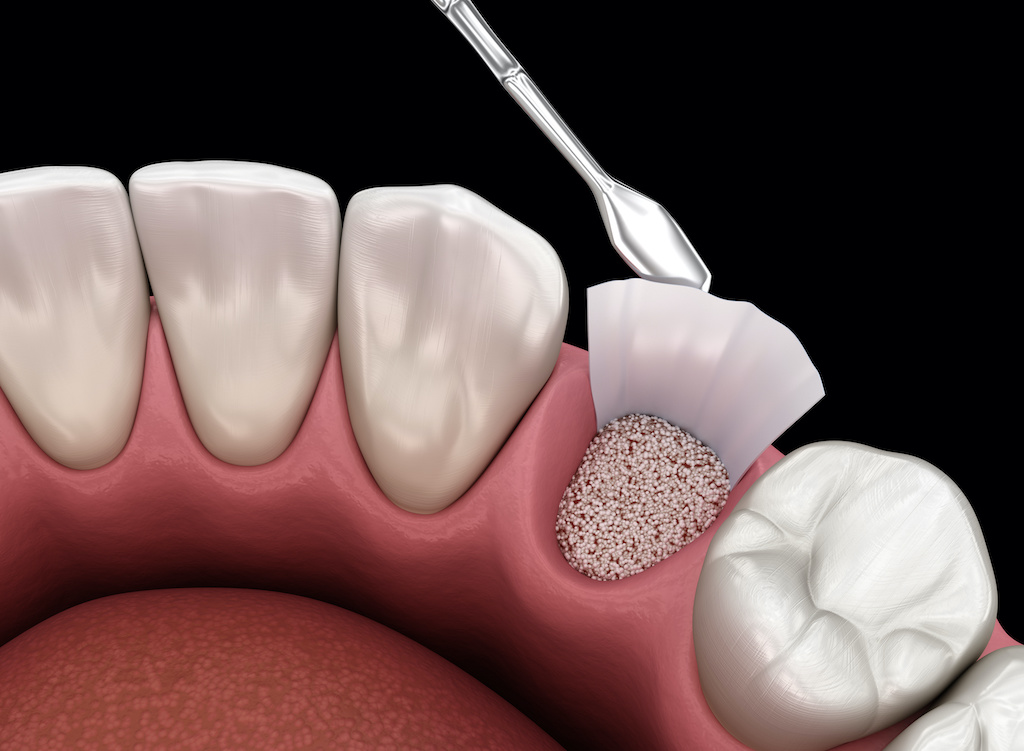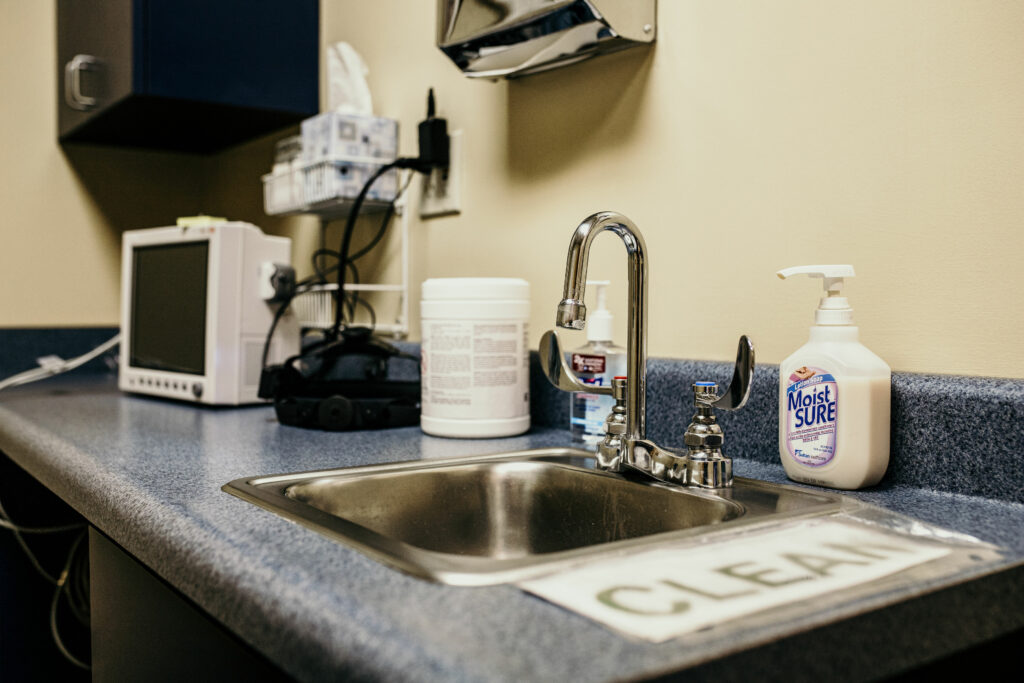Improve the health of your jaw with a bone graft
Bone Grafting
Bone grafting is a surgery where the missing bone is replaced to allow for effective dental implants. With our advanced oral technology and procedures, we can even promote new bone growth in that location for optimal results.

Types of bone grafts.
- Autogenous Bone Grafts
Also known as autograft, autogenous bone grafts involve taking samples from your bones located elsewhere and using these samples to rebuild the jawbone. Common harvest areas include the skull, hip, lower leg bone, jaw, and chin. The advantages of such a procedure include increased bone growth and the reduced chances of your body rejecting the bone, as it comes from your own body.
- Allogenic Bone
Allogenic bone (or allograft) is bone harvested from a cadaver. The bone is sterilized and then processed in a freeze-dried method. Allogenic bone grafts serve as a scaffold to guide healing of the jawbone.
- Xenogenic Bone
Xenogenic bone is extracted from another non-living species, like a cow. The bone is processed at high temperatures to sterilize the bone and reduce the risk of contamination and immune rejection. Xenogenic bone does not promote natural bone growth either. However, it does not require a second procedure such as the autograft.
Bone graft substitutes.
In some cases, natural bone extractions and placements may not be an option for patients. Our visionary oral surgeons are skilled at using synthetic materials to mimic the effects of normal bone grafts.
- Graft Composites
Graft composites mix together materials such as collagen / ceramic composite, bone marrow cells, and more to provide stability and generate growth factors.
- Demineralized Bone Matrix (DMB) / Demineralized Freeze-Dried Bone Allograft (DFDBRA)
This is extracted collagen, protein, and growth factors from allograft bones to be used as a bone graft. It can take the form of putty, chips, powder, or gel.
- Bone Morphogenetic Proteins
Bone morphogenetic proteins (BMPs) are naturally produced in the body. They regulate and promote bone healing and formation.

Do I have enough bone for dental implants?
After tooth extraction, if the walls of the socket are very thick, they will usually fill naturally with bone in two to three months. However, when the walls of your socket are very thin (such as in your upper and lower front teeth), this type of healing will not be as predictable. In these situations, a bone graft is often placed at the time of tooth extraction to help your body fill in the empty socket with bone. This step will maintain the width and volume of bone you will need for implant placement several months later.
More information:
There may be inadequate bone for implant placement if your tooth was removed many years ago and your bony ridge is extremely thin. In this case, a bone graft can be placed next to the thin bone and allowed to heal for up to six months. After the graft has fused to your pre-existing bone, the ridge will be re-entered and the implant placed. Bone grafting is usually a relatively comfortable office procedure. Many different bone-grafting materials are available, including your own bone.
You may also need bone grafting if the sinus cavities in your upper jaw are very large, or very low, and extend into the tooth-bearing areas. This often occurs when teeth in the back of a person’s upper jaw have been removed many years before, and the amount of bone available for implant placement is limited. A “sinus grafting procedure” is then required. Most often, it is performed in the office with local anesthesia and perhaps sedation. During this procedure, the membrane that lines the sinus will be located and elevated. Bone will then be added to restore the bone height and ensure that dental implants of an adequate length can be placed. This procedure often can be performed at the time of implant placement.

Get to know us.
At Rolla Oral Surgery, we know how to help you. Our board-certified surgeons and expert staff can provide the care you need to relieve the discomfort you feel.

